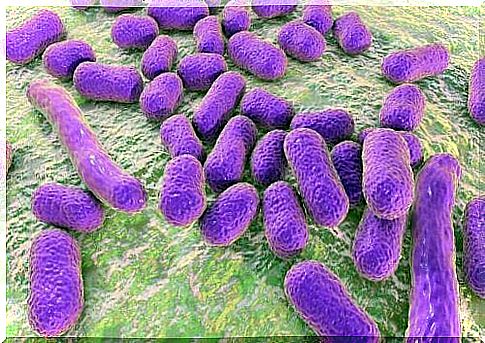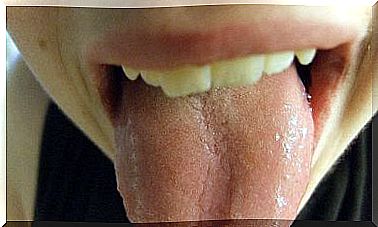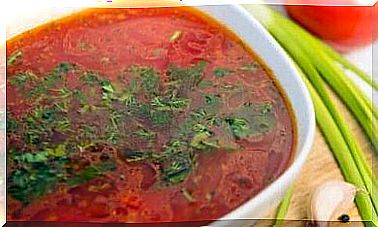The Main Pathogens During The Summer

As we all know, the arrival of summer goes hand in hand with a sudden rise in temperature. As a result, the chances of developing certain infections also increase because certain microorganisms can multiply under these conditions. So, what are the main pathogens during the summer?
Exposure to viruses, bacteria and fungi can occur at any time of the year. However, given the specifics of summer, some manage to spread more easily during the summer months. In the paragraphs below, we’ll tell you about the most common, as well as how they can affect our health.
What is a pathogen?
The term pathogen refers to any microorganism that has the ability to cause discomfort or disease to the host in which it lives. This definition includes any germ, including viruses, bacteria, fungi, protozoa, and other more complex microorganisms.
It is important to note that some of the diseases we will mention below have multiple causes due to their clinical signs. In other words, they can be caused by pathogens of different genera and even different orders. Still, these groupings help simplify treatments.
What are the main pathogens during the summer?

Viruses and bacteria that cause inflammation
Conjunctivitis and ear infections are inflammatory diseases that dominate public swimming pools in the summer. Conjunctivitis has to do with the inflammation of the conjunctiva layer – the mucous membrane that lines the inside of the eye. The symptomatology includes the following:
- Swelling of the eye.
- Reddening of the eye.
- Tears.
- Yellowish discharge.
Conjunctivitis can be of both viral and bacterial origin. In most cases, the adenovirus is usually to blame. This virus spreads through direct contact as well as through particles in contaminated water.
Ear infections, on the other hand, are usually bacterial in nature, when we talk about infections of the outer part of the ear canal. Depending on the location, ear infections are classified as internal (inner ear infection) or external (outer ear infection). Their clinical manifestations include:
- Difficulty hearing.
- Pain in the ear.
- Sensitivity to ear touch.
Both diseases have something in common: the pathogens that cause them, whether viral or bacterial, live in water and in warm temperatures. Therefore, warm pools are the perfect source of nutrition for this type of superficial inflammation.
With this in mind, it is important to take proper hygiene measures and bring your own personal items. Remember that these microorganisms also live on surfaces.
Pathogens that cause food poisoning during the summer

Who hasn’t been unlucky enough to have severe diarrhea after a delicious summer buffet? Food poisoning seems to be the order of the day when we talk about summer. This happens first of all because rises in temperature tend to promote the multiplication of many organisms that cause food poisoning.
Second, it’s because our habits change while we’re on vacation. Eating by the sea or by the pool, where hygiene measures are low, is much more risky than eating in your own clean kitchen.
According to MedlinePlus (Spanish link), some of the most common summer pathogens that cause this clinical condition include the following:
- Bacteria belonging to the genus Campylobacter , gram-negative bacilli that are mobile given the presence of flagellum.
- The E. coli bacterium, which usually lives without problems among the microbiota of the human gut. However, certain strains cause diarrhea when they attach to the intestinal mucosa.
- Vibrio cholera, a bacterium that contains two serotypes, which cause what we all know as cholera.
- Bacteria belonging to the genus Salmonella properly, can better reproduce in warmer temperatures.
As you can see, almost all cases of summer diarrhea are bacterial in nature. That’s because it makes it easier for an animal’s microbiota to mix with its meat if it’s not handled properly. At the same time, it is more common that the water used for cooking and cleaning kitchen utensils is contaminated.
Other common pathogens during the summer
The aforementioned pathogens win the prize when it comes to their prevalence during the summer. However, we cannot close this article without mentioning several other pathogens that are common during this season.
According to the World Health Organization (WHO), there are 10 common diseases that are transmitted to humans from insects.
The reproductive cycle of most of these species ends with maturity in the spring and summer. Therefore, their prevalence increases at this time of year. These are diseases such as dengue, malaria, leishmaniasis and yellow fever, which are often produced by viruses and protozoa.
The fungi that cause skin pathologies are also very common during the summer. Again, installations such as swimming pools and public showers are the perfect breeding grounds. That’s because high temperatures and humidity promote the growth of these fungi.
As you can see, the list of pathogens that cause illness in the summer is practically endless. Bacteria top the list because they cause inflammatory diseases as well as cases of gastroenteritis and diarrhea.
That’s why it’s important to take extreme precautions when choosing where to eat, shower, bathe, and use the bathroom when you’re on vacation. Furthermore, if you develop symptoms of infection, be sure to see a doctor.








